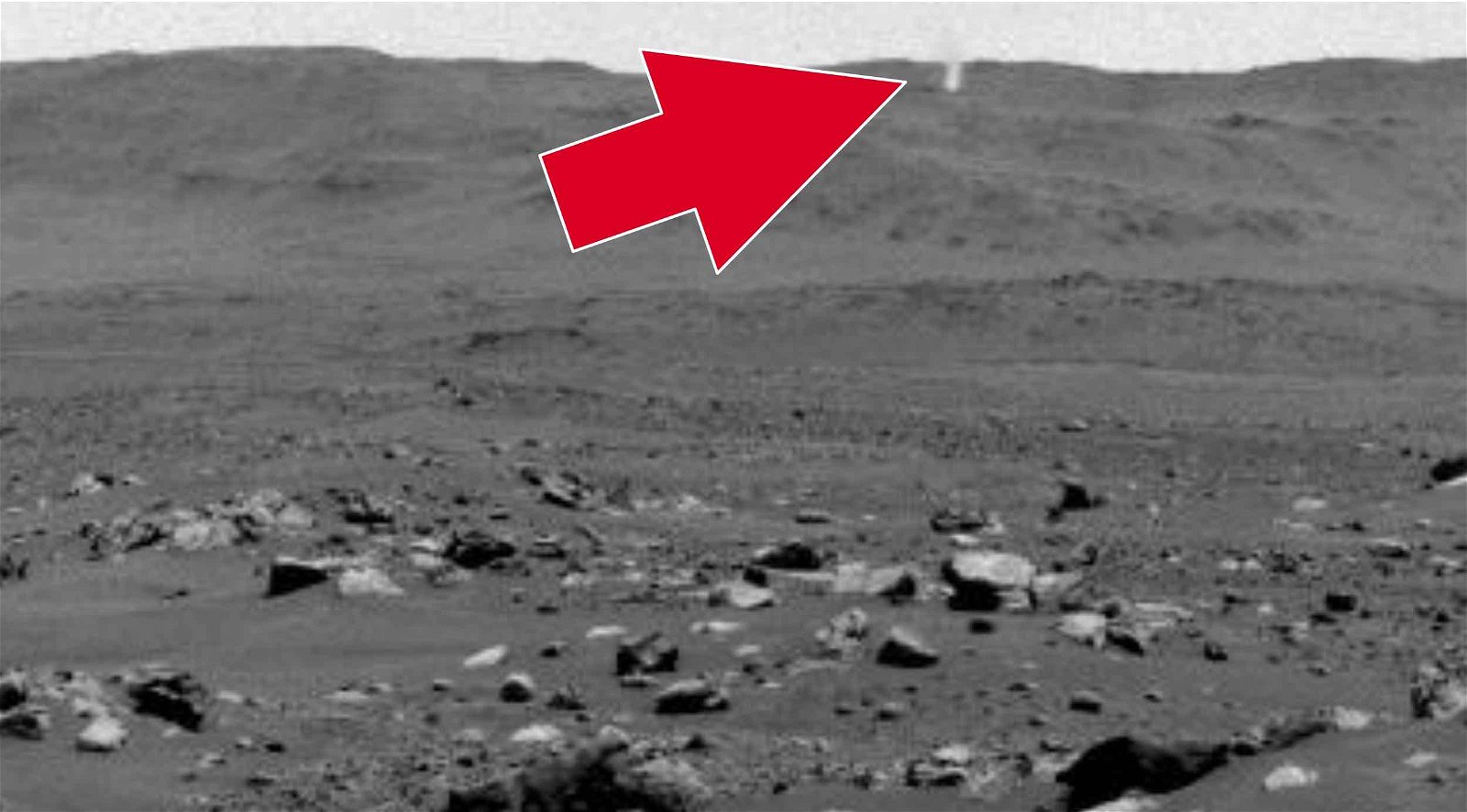Newly released images captured by NASA’s Perseverance rover showcase a rare natural event moving across the Martian landscape.
From its position in Jezero Crater, the car-sized robotic rover’s cameras rolled as a white object appeared in the distance, moving along the crater’s western rim.
Although the detection of movement of any kind on the barren Martian landscape is unusual, the strange-looking object Perseverance succeeded in filming was revealed to be a dusty Martian whirlwind, according to a post that appeared on the website of NASA’s Jet Propulsion Laboratory.
“The lower portion of a Martian dust devil was captured moving along the western rim of Mars’ Jezero Crater by NASA’s Perseverance rover on Aug. 30, 2023,” the JPL posting read.
“The video, which was sped up 20 times, is composed of 21 frames taken four seconds apart by one of the rover’s Navcams,” it added.
Compared with tornadoes that occur on Earth, Martian dust devils like the one filmed on August 30th are fairly innocuous, although studying them does provide additional insights into the atmosphere of the Red Planet, knowledge of which may end up being crucial for future space missions.
Based on what the footage reveals, NASA scientists quickly determined that the dust devil was a safe two and a half miles from Perseverance at the time the footage was captured, as the twister made its way eastbound across Thorofare Ridge.
The Martian dust devil is believed to have been about 200 feet in diameter, and although its height could not be directly discerned, the visible shadow cast by the spinning Martian storm suggested it was a little more than a mile in height.
Similar to how they form here on Earth, Martian dust devils occur when cells of warm air rise and begin to mix with columns of cooler air.
However, unlike their Earthly counterparts, Martian dust storms like the ones Perseverance managed to film can be much larger, appearing mainly during the Martian spring and summer.
It is difficult to predict precisely where dust storms will occur on the Red Planet, so rovers like Perseverance and its predecessor, Curiosity, scan the Martian landscape in all directions with their cameras. When the storms appear, they obtain imagery mostly in grayscale, which reduces the amount of data required to be sent back to Earth for study.
The recent Martian dust devil is not believed to have posed a direct threat to Perseverance and its mission, which has remained underway since its arrival at Jezero Crater in February 2021.
Micah Hanks is the Editor-in-Chief and Co-Founder of The Debrief. He can be reached by email at micah@thedebrief.org. Follow his work at micahhanks.com and on Twitter: @MicahHanks.

